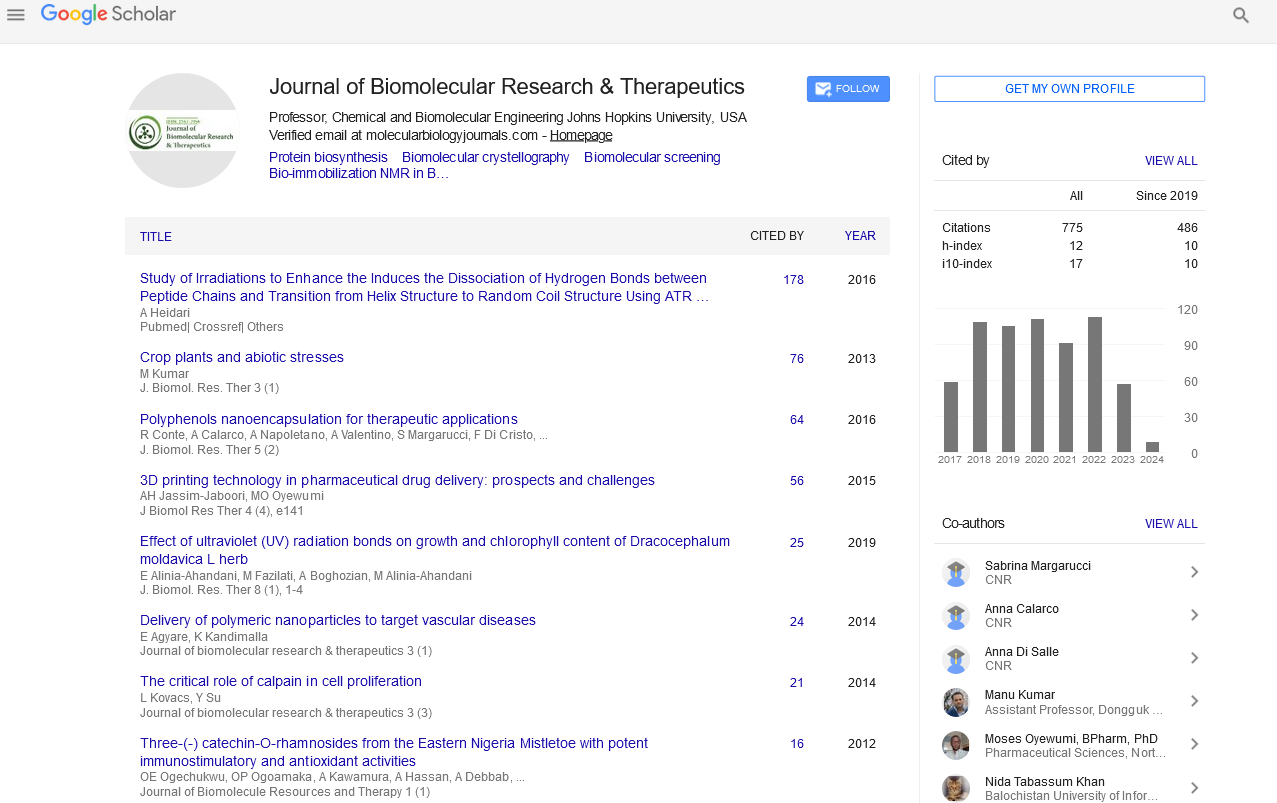PMC/PubMed Indexed Articles
Indexed In
- Open J Gate
- Genamics JournalSeek
- ResearchBible
- Electronic Journals Library
- RefSeek
- Hamdard University
- EBSCO A-Z
- OCLC- WorldCat
- SWB online catalog
- Virtual Library of Biology (vifabio)
- Publons
- Euro Pub
- Google Scholar
Useful Links
Share This Page
Journal Flyer

Open Access Journals
- Agri and Aquaculture
- Biochemistry
- Bioinformatics & Systems Biology
- Business & Management
- Chemistry
- Clinical Sciences
- Engineering
- Food & Nutrition
- General Science
- Genetics & Molecular Biology
- Immunology & Microbiology
- Medical Sciences
- Neuroscience & Psychology
- Nursing & Health Care
- Pharmaceutical Sciences
Abstract
Complex Acylation of Angiotensin II by N-Hydroxysulfosuccinimide linked Biotin Reagents
Qinfeng Liu, Andres Lam and Achyut Kathuria
N-Hydroxysulfosuccinimide-linked biotins (sulfoNHS-biotins) are water soluble biotin tags commonly used to conjugate a biotin moiety to proteins by rapid N-acylation of primary amines. Unexpected O-acylation by sulfoNHSbiotin on tyrosine of Angiotensin II (Ag-II) and an acylation on third site unable to characterize were identified by LC-MS in addition to the expected N-acylation on the N-terminal of Ag-II. The N-acylation only undergoes incomplete hydrolysis in 0.1% formic acid not at pH 7.2 and 8.0, while two unexpected acylation hydrolyze at both conditions, but their hydrolysis in 0.1% formic acid was much more rapid. Dithiothreitol treatment selectively catalyzed hydrolysis of both of the unexpected acylation but not the N-acylation of Ag-II. The maximum yield of O-acylation of the Ag- II tyrosine was 99% at pH 7.2 and 95% at pH 8.0 as compared N-acylation of lysine when reacted with excess sulfoNHS-biotin with these yields of 94% at pH 7.2 and 96% at pH 8.0. Acylation of the third uncharacterized site of Ag-II showed maximum yield of approximately 17% at pH 7.2, but higher yield (? 47%) at pH 8.0 within 30 min. The unexpected O-acylation of the Ag-II tyrosine occurred within 1 min at either pH 7.2 or pH 8.0, as rapidly as the N-acylation, while the other unexpected acylation required more time to complete at pH 8.0.


